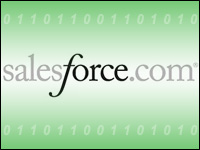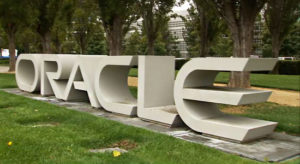
Dreamforce has always been about many things happening at once — a three-ring circus, in a good way. There are announcements about applications, platforms, philanthropy, entertainment and, importantly, parties. This year there was all of that and then some — I was a guest with a ringside seat.
Since most of the product announcements came out over the last few weeks, some of us were wondering what there would be to talk about. In retrospect, that worry wasn’t worth the effort — there was plenty.
Beginning in Indianapolis a few weeks ago with the ExactTarget Marketing Cloud event, and continuing with the announcements of Sales Cloud1 and Service Cloud1 last week, we had a good sense that Salesforce was doubling down on core products to make them more at home in the mobile and social environment of modern business.
Analytics for the Front Lines
Perhaps the worst-kept secret of the event was the company’s announcement of Wave, its analytics cloud, and it was a minor controversy among the chattering class. Wave tries to leapfrog ahead of conventional analytics and business intelligence for the obvious reasons that those other technologies are based on old legacy set-piece paradigms, for the most part, and therefore are less suitable for handheld business.
Salesforce wanted to deliver analytics to the hands of people on the front lines who need information to make good decisions in the moment of truth, and I think the company’s first offering does that.
Wave is not only graphical to an extreme, but also somewhat animated — if by animation you mean being able to change presentation styles on the fly. Two things I like about the UI: First, it enables the user to switch from a bar graph to a pie or doughnut chart with a finger point; second, it’s zippy, and the graphics are live — meaning, for instance, that you can turn a doughnut chart like a dial to get to the segment you want to drill into.
It’s also intuitive, and I think any reasonably smart person (i.e., someone who can draw a breath and a paycheck) easily can think up questions to ask of the data and get usable answers.
The snarking class is asking if the product is ready for prime time, but this is stuff I’ve heard for 15 years. Salesforce has developed a reputation for not talking about things it can’t deliver, so I am a believer when they tell me they have some very large companies involved with the product.
With Wave, Salesforce appears to have built out its platform, which now includes clouds for sales, marketing, service, app development, social, mobile and analytics. With all of that, in theory you can build an application that will run everywhere — from the desktop to the handheld, in multiple operating systems and browsers.
Of course, there will be new versions and improvements, but to me this signals the closing of the frontier and the opening of the market to settlement and expansion.
In practical terms, I hope this speeds up the adoption of more process-oriented business, as opposed to a more conventional transaction orientation. In other words, I think the biggest changes are ahead of us. Vendors want transactions but customers expect process, and the newest technology at last enables vendors to meet customers half way.
Customer Science
It was one thing when a company could point to standard CRM plus a mobile browser capability, but it’s quite another now that a vendor can capture its customers’ data, analyze it, and offer up next-best actions in a wide variety of situations.
With this capability, we turn a corner from ad hoc business designed to capture a single transaction to a kind of customer science that operates inside of customer moments of truth. When I say “science,” I mean it literally, not as a metaphor. Customer science someday will be seen as a specialty part of sociology, I am sure.
It’s not just the difference between the old order and science that’s striking. The science is so much more efficient and adept at developing and maintaining the customer relationship that I doubt we’ll see very much of the old approach to business in a few years. This is a tipping point enabled by big data, analytics, and a lot of technology — and it is amazing to me that so few software vendors understand the moment they inhabit.
I can accept that the above might sound confusing or perhaps even tantalizing. In either case, I write about it in more detail in my new book. My buddy and former CMO at Salesforce, Cary Fulbright, tells me I am not making a shameless plug for the book if I don’t reveal the title, so let’s leave it there — but watch this space.
Finally, it has to be said that Dreamforce might someday be referenced as the show that ate San Francisco if this year’s numbers are any indication. There were 145,000 registrations, and I am told 5 million online viewers.
Having all those people in the Moscone neighborhood presented challenges, such as when using the sidewalks. However, the crush also brought into close proximity an abundance of like-minded people who at times seemed to think as one. I liked the mind meld but can do with fewer humans. For a few days, though, it was tolerable, especially when considering the upside.























































